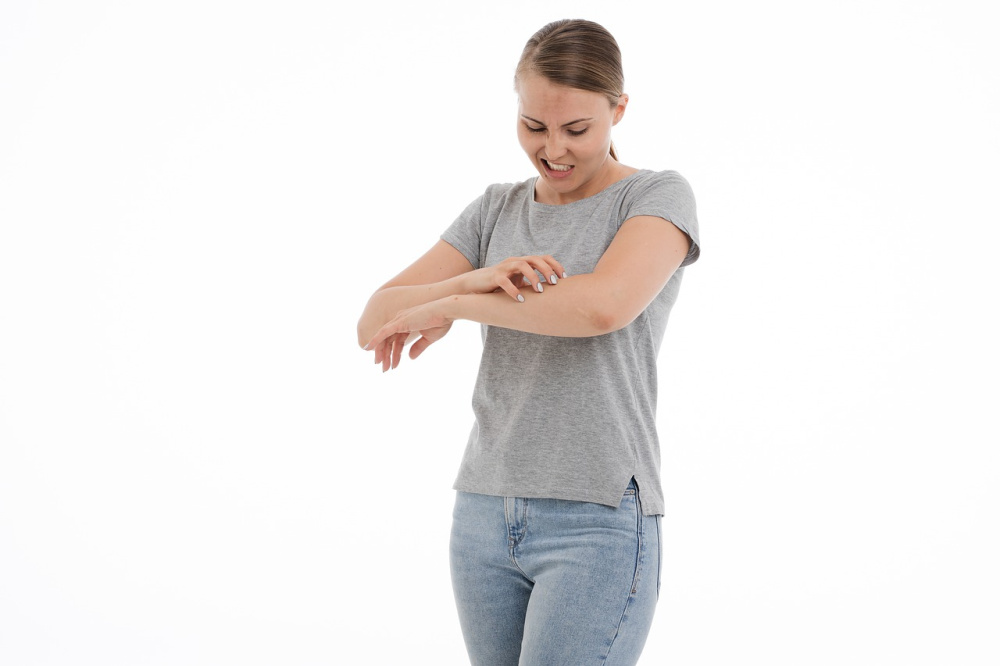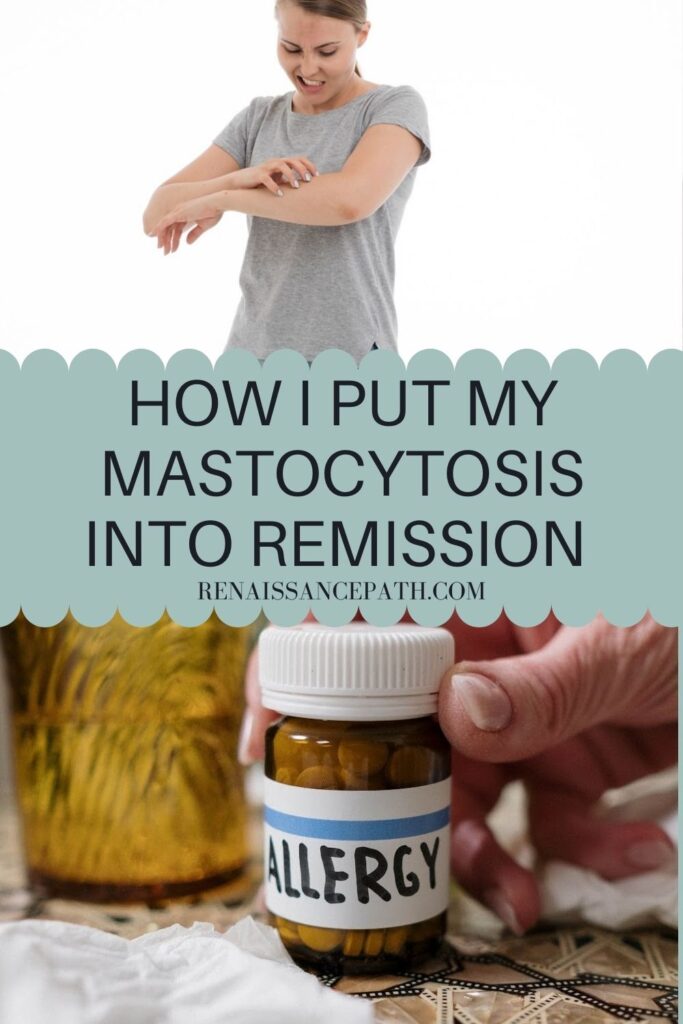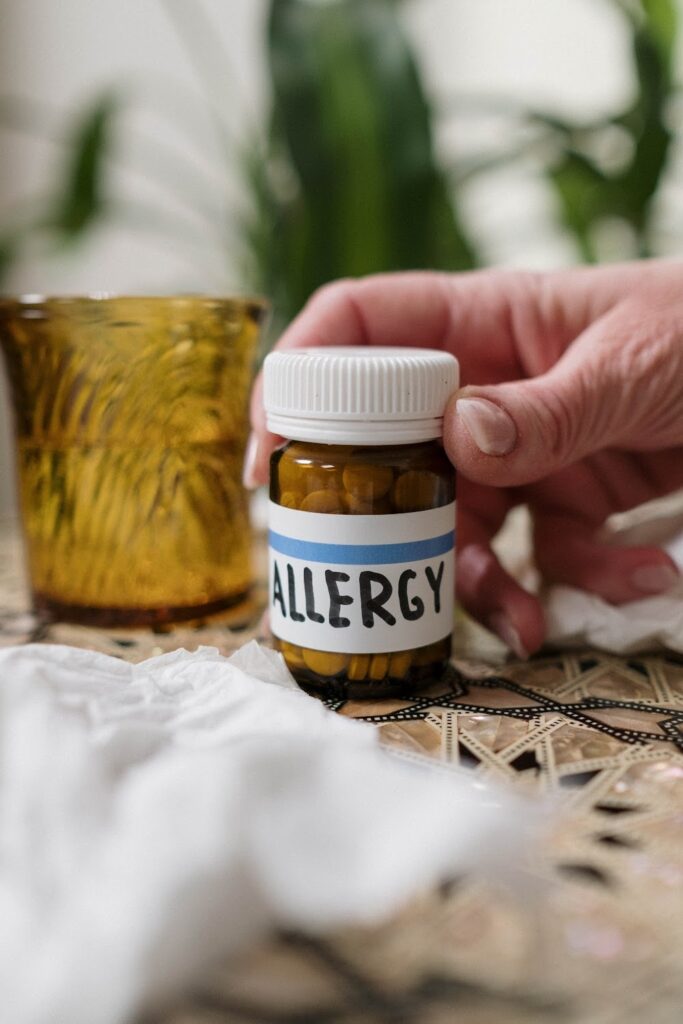
- How I Put Mastocytosis into Remission
- Symptoms of mastocytosis or mast cell disease
- What are Mast Cells?
- Mast cell Activation Syndrome
- What causes mast cells to be triggered?
- How is Mastocytosis and MCAS treated?
- What causes Mastocytosis or MCAS?
- How I put my mastocytosis into remission.
- MTHFR Gene Mutation
- Treatment for MTHFR Gene Mutation
- HLA-DR and Biotoxin Illness
- CIRS/Biotoxin Illness Treatment
- Meditation, Self-Hypnosis and Breath-work
- Breath-Work
- Self-Hypnosis
- Meditation
- Final thoughts
How I Put Mastocytosis into Remission
Yes you are reading the right. How I put my Mastocytosis into remission. Seems pretty bold huh?
You probably are reading this because you recently were diagnosed with Mastocytosis or Mast Cell Activation Syndrome. Or someone you love has been. Despite what doctors or other patients might tell you it is possible to put the symptoms of Mastocytosis into remission. It is possible to live symptom free.
When I found out I finally had a name for what had been causing my chronic health issues for years, I was a little relieved. While I wasn’t happy that I had this disease, I felt vindicated because that meant it wasn’t all ‘’in my head’’. Now I have a name when someone asks about the rash on my chest and arms, or why my face is flushed and so red, why it feels like someone is poking me with red hot pins and needles all over.
When you’re sick and don’t have answers why it can be so scary. Having to explain to friends why you can’t eat this or that. Or that perfume your good friend loves to bath herself in and how it can send you into anaphylaxis. I can tell you I experienced so many eye rolls and as time went on I stopped being invited on outings and get-togethers.
I wanted others to know you can manage the symptoms and live a good life. When I was first diagnosed it was hard to find anything positive online. It was so depressing. Luckily I did come across a few people in some support groups and some online bloggers who experienced little to no symptoms and dare I say put their Mastocytosis into remission.
If you already know about Mastocytosis or Mast Cell Activation Syndrome and just want to know how I put my Mastocytosis into Remission you can jump towards the end of this blogpost.
Typically it takes seven to nine years on average to get a diagnosis. However, I was lucky enough to get a diagnosis after 2 years. A dermatologist diagnosed my mastocytosis via a skin biopsy.
What’s the name of this condition I have? Cutaneous Mastocytosis. Mastocytosis is considered a rare disease. While it is considered rare it still effects approximately 200,000 people or less in the United States alone. I have Cutaneous Mastocytosis. Cutaneous is another word for skin. To be exact I have a subtype of cutaneous mastocytosis called Telangiectasia Macularis Eruptiva Perstans (TMEP). TMEP is considered a rare type of mastocytosis, So I guess you can say I won the rare disease lottery.
Most doctors have never heard of Mastocytosis or Mast Cell Activation Syndrome. Because of this they don’t know how to recognize the symptoms. Mastocytosis is a mast cell disease.

Symptoms of mastocytosis or mast cell Activation Syndrome
- Headache, brain fog, cognitive dysfunction, anxiety, and depression.
- Cutaneous (skin), flushing of the face, neck, and chest. Hives, skin rashes, itching with or without rash. Dermographism.
- Cardiovascular symptoms- lightheadedness, fainting, rapid heart rate, chest pain, low blood pressure, high blood pressure at the start of a reaction. Blood pressure instability.
- Hormonal changes. Gynecological uterine cramps, bleeding. Urinary bladder irritability, and frequent voiding.
- Systemic and or organ-specific anaphylaxis angioedema (swelling).
- It can affect the ear, nose, throat, and respiratory system. Nasal itching and congestion, throat itching and swelling, wheezing, and shortness of breath.
- Gastrointestinal- diarrhea, nausea, vomiting, abdominal pain, bloating, gastroesophageal reflux disease(GERD).
- Skeletal bone, muscle pain, osteopenia, osteoporosis. Symptoms can be sudden and unpredictable in onset.
Patients may have several symptoms or just a few.

What are Mast Cells?
Mast cells are a type of immune cell that lives in the bone marrow and also other body tissues such as your skin the lining of your airway and lungs your gastrointestinal tract.
Everybody has mast cells; they play a big role in keeping us healthy by defending us from infections/viruses. Mast cells are involved in the body’s inflammatory response, from things as simple as a bug bite that swells up to allergic reactions and anaphylaxis.
Mast cells are tiny little sacks or granules. A membrane surrounds the sack. Inside the sack are mediators. Examples of these mediators are histamine, tryptase, prostaglandins, heparin, and leukotrienes. Those mediators have different roles in the body such as healing or allergic responses.
Mastocytosis patients have increased masts cells, more mast cells than the average person and when those mast cells are activated or triggered they release their contents like heparin, histamine, prostaglandin, etc. Then patients experience symptoms associated with that mediator release.
Mast cell Activation Syndrome
With mast cell activation syndrome, the patients will have mast cells that are triggered too easily and they will release mediators. Symptoms can be different for patients and can range from mild to severe. And because mast cells are located in all human tissues, MCAS and Mastocytosis can affect any organ system.
What causes mast cells to be triggered?
Triggers can be different for each person.
- Infections
- Sunlight
- Sudden temperature changes, heat or cold.
- Certain foods (typically high histamine foods)
- Alcohol
- Drugs (NSAIDS, opioids, some antibiotics, and some numbing medications).
- Strong scents (perfume, cleaners)
- Smoke
- Venom from insect bites
- Exercise
- Fatigue
- Friction or vibration
- Stress (emotional, physical or mental).
How is Mastocytosis and MCAS treated?

- Standard treatment is antihistamines (H1) like Claritin or Zyrtec.
- H2 antagonists like ranitidine or famotidine.
- Ketotifen and Cromolyn Sodium. Both are mast cell blockers.
- Following a Low Histamine Diet.
- Staying away from known triggers like certain foods, perfumes or strong scents.
- Managing stress.
- Getting plenty of sleep.
- Epinephrine shots (epi-pen)
What causes Mastocytosis or MCAS?
The causes of Mastocytosis or Mast Cell Activation Syndrome are unknown but many researchers believe there is a genetic component. While others like many functional medicine doctors believe that heavy metal toxicity, gut dysbiosis, biotoxins, and infections can be a contributing factor.
- Heavy metals like mercury and aluminum are known to cause mast cell degranulation (1). This is why mercury is used as an adjuvant in many vaccines, it invokes the inflammatory response.
- Gut dysbiosis
- Mold
- CIRS – Chronic Inflammatory Response Syndrome can be an underlying issue. As those who have it, have a reduced ability to clear mycotoxins.
- Chronic stress
How I put my mastocytosis into remission.
I would definitely say my Mastocytosis is in remission. I know longer have to take supplements or prescription meds to control symptoms.
How did I do it? I followed a Low Histamine Diet. This was a game-changer for me. I did an elimination diet first. As a result I found that foods like eggs, wheat, dairy, and soy were big triggers.
Also, alcohol was a big no-no. Anytime I had an alcoholic beverage it would cause flushing. Soon after drinking I would have hives. It did not matter what type of alcohol I drank. They all caused ill effects. Sometimes just having one glass of wine would make me feel hungover the next day. I also noticed that anything with red food dye gave me hives as well.
Most fermented foods gave me trouble. And that’s because fermented or aged foods like salami are high in histamine. And histamine was the last thing my body needed more of. So pickles or olives or vinegar were off the list. I can now tolerate fermented foods in small amounts.
Leftovers were also off the list. Leftovers contain higher levels of histamine. Because of that, they would have to be frozen and reheated later. Which is totally doable.
So you’re probably thinking what did you eat? Well, I ate a wide range of foods. Mostly meats, veggies, and some fruit along with nuts and seeds. I would also eat some gluten-free grains like quinoa, rice and used gluten-free flours in baking. As time went on I found that being grain-free made me feel even better.
I took over-the-counter antihistamines and mast cell blockers like ketotifen. This really helped control my symptoms. This worked well for me for several years. Currently, though I no longer need these medications.
MTHFR Gene Mutation
After a while, I started getting hives again. And I was having trouble with my joints swelling. I made an appointment with an integrative medicine doctor.
I explained that all the usual things I was doing didn’t seem to be helping much anymore. She drew my blood. She took several viles and found that I had a couple of things going on.
I found out I have two different genetic mutations. One was the MTHFR gene mutation. MTHFR stands for methylenetetrahydrofolate reductase. Boy, that’s a mouthful! When you have this gene mutation your body doesn’t methylate properly.
What’s methylation? It is the transfer of one-carbon atom and three hydrogen atoms from one substance to another. When methylation is working well it affects your health in a positive way. And when it’s not working well it can have a negative effect on your health. Methylation has a part in many of the body’s functions.
- It controls detoxification of heavy metals, chemicals, and hormones.
- The stress response(flight or fight)
- Histamine metabolism
- Cellular energy
- The immune system response
- Repair of damaged cells by free radicals
- Fat metabolism
- Balancing brain chemistry and neurotransmitter production
- Estrogen metabolism
When you have an MTHFR gene mutation, it can impact your health negatively by interfering with proper methylation. When the body doesn’t methylate properly it can affect you in different ways.
Treatment for MTHFR Gene Mutation
The recommended treatment for this gene mutation is to NOT take folic acid which is a synthetic version of folate. You can instead take methylfolate. Those with MTHFR gene mutation have a reduced capacity for breaking down folic acid into its active form L-methylfolate. So basically if there isn’t enough folate available this can impact methylation.
HLA-DR and Biotoxin Illness
The other gene mutation my doctor tested me for was HLA-DR. Whats HLA-DR? HLA is Human Leukocyte Antigen, HLA complex helps the immune system distinguish the body’s own proteins from proteins made by foreign invaders such as viruses and bacteria.
Chronic Inflammatory Response Syndrome(CIRS) is what she thought I had. CIRS is also called Biotoxin Illness. As well as Sick Building Syndrome or Mold Sickness.
I had several inflammatory markers that suggested I had CIRS. Once she found out I tested positive for the HLA-DR gene mutation she confirmed the diagnoses of CIRS/Biotoxin Illness.
When you have the HLA-DR gene mutation. Your body doesn’t respond to toxins the way other people’s bodies do. In other words, your body isn’t tagging certain toxins for excretion. Then the body reabsorbs the toxins and they keep recirculating. Ultimately this leads to chronic inflammation.
For those that have CIRS/Biotoxin Illness, mold is a big problem. Even small amounts of mold exposure can leave a CIRS patient feeling very ill. And it’s not just mold that can make people sick it can be bacteria, actinomycetes, mycobacteria, volatile organic compounds, endotoxins, and inflammagens.
Coincidentally, I lived in several houses and apartments that had a mold problem. At one point I had mushrooms growing in a closet caused by a water leak in my bedroom.
CIRS/Biotoxin Illness Treatment
My doctor prescribed a low-carb diet and told me to take high-dose fish oils along with some other vitamins and a prescription medicine called cholestyramine.
Cholestyramine is a bile sequestrant. It works by binding to cholesterol, bile salts, and biotoxins in the small intestine. As a result, the biotoxins cannot be reabsorbed into the body and they are excreted as waste.
I noticed a great improvement in just a few weeks. Consequently, after a few months, I didn’t seem to have any more symptoms of mastocytosis. Also my joint pain improved. I often wondered if my body was just full of toxins. Thus it was making my mast cells go bonkers.
Perhaps my immune system was just on high alert at all times. I strongly believe taking the Cholestyramine is how my body was able to heal and ultimately put my Mastocytosis into remission.
Meditation, Self-Hypnosis and Breath-work

Strong emotions good or bad can trigger mast cells. I knew that whenever I was stressed or upset I would start to experience those not so fun symptoms. Clearly I needed to find a way to gain some control over my bodies response to stress.
Breath-Work
I researched many different ways to manage stress. I taught myself some basis breathing exercises. The one I liked the most was called 4-7-8 Breathing Method. Dr Weil created it. This is how it’s done. First you exhale through your mouth. Next, you inhale through your nostrils for 4 seconds. Then you will hold the breath for 7 seconds. Lastly you will exhale through your mouth for 8 seconds. Repeat this cycle 4 times.
Natural antihistamines
There are some natural supplements and herbs that have antihistamine properties. One is quercetin, another one is stinging nettles. Bromelain which is found in pineapple is a powerful antihistamine and anti-inflammatory. Lastly, Moringa is was shown to have antihistamine properties. You can read more in my post about the Benefits of Moringa.
Self-Hypnosis
All hypnosis is self hypnosis. Practicing self hypnosis daily helped me learn progressive relaxation. And it invokes that relaxation response. The relaxation response is the opposite of the ”Fight or Flight” response. When you are in a Fight or Flight state it’s being driven by your sympathetic nervous system.
The relaxation response activates your parasympathetic nervous system which is responsible for rest and digest. Which is a good thing. Self-hypnosis also uses guided imagery which can invoke the relaxation response.
Meditation
While there are lots of different styles of meditation. I liked guided meditation. Also, I love mantra meditation. All styles of meditation are proven to reduce stress.
Additional Resources
https://www.mastocytosis.ca/en/
https://www.aaaai.org/conditions-treatments/related-conditions/mcas
https://www.ifm.org/news-insights/fight-inflammation-stabilize-mast-cells-naturally/
Final thoughts
It’s been almost 4 years since my biotoxin illness diagnosis and 10 years since my Mastocytosis diagnosis. I’ve always wondered how many people are out there with the same symptoms as I was experiencing?
I believe other people are suffering from the same symptoms I had. And not getting any answers on why they are so sensitive to so many things? And why they are so sick all the time? It really makes me wonder.
What do you think? Do you think mastocytosis and mast cell activation syndrome are possibly linked to toxin exposure and/or our environment?
Comment below and let me know what you think?
Much Love,
Melissa
I highly recommend reading my post on Leaky gut if you are experiencing mast cell activation syndrome or mastocytosis symptoms.
This website is for educational purposes only. The information provided by Renaissance Path is not intended to diagnose, treat, or cure any diseases. Please consult a qualified health care professional for medical advice.
Leave a Reply